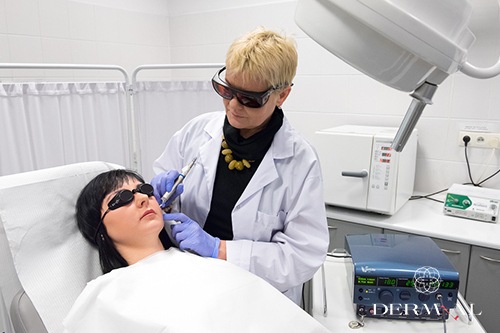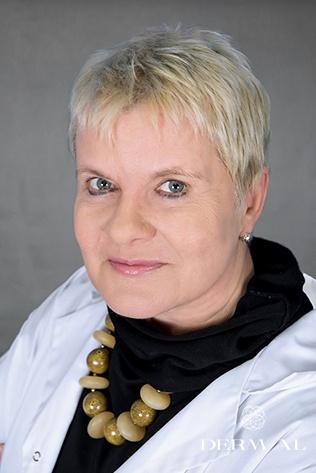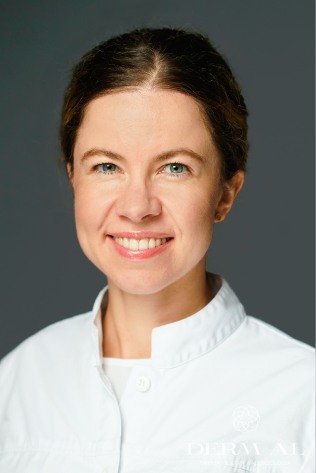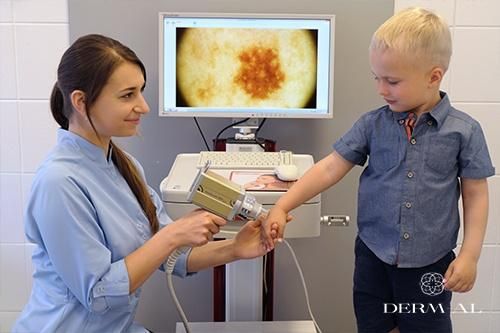Laser removal of vascular lesions on the face and décolleté

- Description of the treatment
-
The Derm-Al Centre uses the advanced VariLite™ laser, manufactured in the USA, winner of the Pearl of Dermatology award of the Polish Society for Aesthetic Dermatology, for the following procedures: removal of dilated blood vessels (teleangiectasia) on the face and décolleté as well as on the thighs and cruses, removal of stellate and cherry angiomas, removal of dark spots on the face and the back of the hand.
How does the VariLite™ laser treatment work?
The laser operates on two wavelengths: 532 nm and 940 nm. The high absorption 532 nm beam is used mainly for the treatment of smaller, superficial red capillaries.
The moderate absorption 940 nm beam is used for deeper and larger blue capillaries. With this wave length, the sun tan or skin phototype are not an issue.
- Wavelength selection and controlled pulse duration increase the precision of the procedure and reduce the feeling of discomfort as well as the risk of side effects
- The high power of the laser, various spot sizes and adjustable energy density make the treatment more efficient
- The diode technology ensures the longevity of the laser
The physician adjusts the laser parameters to the type of the lesion and the layer and structure of the skin. Then, a laser beam is applied to the selected spot. The laser is precise enough to selectively treat lesions within the desired tissue. After the treatment, scabs or dark spots may develop and remain for several days. The should not be scratched or removed. The physician may recommend antibiotic ointment or soothing cream to accelerate healing.
The treatment may cause subjective sensation, like stinging, burning or pain. Because each patient reacts individually, it is possible to first make a laser test to make sure that the sensation is acceptable for the patient and to see how their skin reacts to the laser.
Depending on the size and number of lesions, the treatment may have to be repeated a number of times. One treatment is enough to remove small, individual vessels.
The treatment may be repeated on the same section of the skin after appr. 8 weeks.
After the treatment, the patient should avoid physical exercise, massages, hot baths and exposing the skin to injury for a few days. Also, exposure to sun should be avoided and it is important to use strong sunblock creams. The physician will inform the patient of any further recommendations.
-








